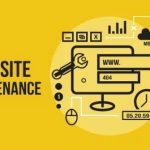Website speed is crucial for user experience and SEO rankings. A slow UI can frustrate visitors and increase bounce rates. Here’s how to optimize your website’s UI for speed without sacrificing aesthetics or functionality.
Optimize Images and Media

Use modern formats like WebP instead of JPEG/PNG.
Compress images using tools like TinyPNG or ImageOptim.
Implement lazy loading to load images only when they appear in the viewport.
Consider SVGs for icons and simple graphics.
Minimize CSS and JavaScript
Use minification tools to remove unnecessary characters from CSS/JS files.
Reduce reliance on large frameworks use only the components you need.
Combine small CSS/JS files to reduce HTTP requests.
Implement critical CSS to load essential styles first.
Use a Lightweight Framework
Choose performance-focused UI libraries like Tailwind CSS instead of bulky frameworks.
Avoid excessive use of third-party scripts and plugins.
Opt for server-side rendering (SSR) or static site generation (SSG) when possible.
Optimize Fonts and Icons
Limit the number of web fonts; use system fonts when possible.
Load fonts asynchronously using font-display: swap.
Use icon fonts or SVGs instead of multiple PNGs.
Enable Caching and Content Delivery Networks (CDN)
Implement browser caching to store assets locally for returning visitors.
Use a CDN like Cloudflare or AWS CloudFront to serve content from the nearest server.
Optimize UI Rendering
Reduce DOM complexity too many elements slow down rendering.
Avoid unnecessary animations and heavy effects.
Use lazy loading for videos and iframes.
Improve Server Response Time

Use efficient hosting with fast response times.
Optimize database queries and enable Gzip/Brotli compression.
Implement HTTP/3 for faster, more reliable connections.
Test and Monitor Performance
Regularly test your website using Google PageSpeed Insights, Lighthouse, or GTmetrix.
Monitor Core Web Vitals to measure real-world speed performance.
Discover more from Wits Technologies Ltd
Subscribe to get the latest posts sent to your email.





